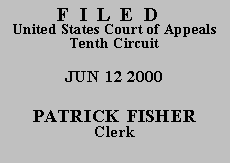

On appeal, the government contends that we lack jurisdiction over this matter because the complaint fails to allege any final agency action, resulting in lack of standing to pursue a claim under the APA. We review questions of standing de novo. See Utah v. Babbitt, 137 F.3d 1193, 1203 (10th Cir. 1998). When considering a motion to dismiss, we must construe the complaint in favor of the complaining party and assume the truth of all factual allegations. See id. at 1204. Because we agree plaintiffs have failed to demonstrate APA standing, we do not reach the Article III standing issue. See Jean v. Nelson, 472 U.S. 846, 854 (1985) (courts should avoid reaching constitutional issues when statutory determinations are decisive).
Because NEPA does not provide for a private right of action, plaintiffs rely on the judicial review provisions of the APA in bringing their claims. See 5 U.S.C. § 702. The plaintiffs must therefore satisfy the "statutory standing" requirements of the APA. Utah v. Babbitt, 137 F.3d at 1203. Specifically, they must establish that defendants took "final agency action for which there is no other adequate remedy in court." 5 U.S.C. § 704. See also id. § 702; Lujan v. National Wildlife Fed'n, 497 U.S. 871, 882 (1990).
Whether federal conduct constitutes final agency action within the meaning of the APA is a legal question. See Utah v. Babbitt, 137 F.3d at 1207. The APA defines "agency action" as an "agency rule, order, license, sanction, relief, or the equivalent or denial thereof, or failure to act." 5 U.S.C. § 551(13). Plaintiffs have the burden of identifying specific federal conduct and explaining how it is "final agency action" within the meaning of section 551(13). See National Wildlife Fed'n, 497 U.S. at 882; Catron County v. U.S. Fish & Wildlife, 75 F.3d 1429, 1434 (10th Cir. 1996). In order to determine if an agency action is final, we look to whether its impact is "direct and immediate," Franklin v. Massachusetts, 505 U.S. 788, 796-97 (1992); whether the action "mark[s] the consummation of the agency's decisionmaking process," Bennett v. Spear, 520 U.S. 154, 178 (1997); and whether the action is one by which "rights or obligations have been determined, or from which legal consequences will flow," id.
The complaint alleges the following federal conduct for our review. It asserts that Colorado's reintroduction of the Canadian lynx will occur on federal land managed by the Forest Service, see Complaint, ¶ 6, with "federal government consent," id. at ¶ 9, and that the Plan was "agreed to, supported, and facilitated by" the Forest Service, id. at ¶ 11. Colorado allegedly worked with the Forest Service in formulating the Plan, and various federal agencies performed "significant and substantial work," such as "conducting geographic analyses, funding other analyses, and actively participating in public meetings regarding the project." Id. at ¶ 8.
Plaintiffs then contend that an agreement between the United States Department of the Interior and the State of Colorado concerning programs to manage Colorado's declining native species constitutes final agency action. We disagree. This document is merely a general agreement for state and federal agencies to work together in the future on specific projects and as such is not "final agency action." See National Wildlife Fed'n, 497 U.S. at 891-93 & n.2 (general land review program in place to guide future site-specific decisions not "final agency action"). Plaintiffs also contend a letter written from the Regional Forester pledging the Forest Service's readiness to aid Colorado in implementing the Lynx Recovery Plan is final agency action. An agency's intent to take action if requested does not constitute final agency action under section 551(13). See id. at 892. Plaintiffs finally claim the Forest Service's participation with Colorado in formulating the Plan constitutes final agency action. Neither the Complaint nor the plaintiffs' brief tells us how rights and obligations are determined by, or how legal consequences flow from, the federal involvement in preparing Colorado's Plan. Moreover, non-binding assistance such as conducting and funding analyses and participating in public meetings is not agency action for the same reason. See id.
Plaintiffs have failed to meet their burden of identifying a "final agency action" as defined in section 551(13) for us to review. They therefore lack the statutory standing required to bring this claim under the APA. See, e.g., Chemical Weapons Working Group, Inc. v. U.S. Dep't of the Army, 111 F.3d 1485, 1494 (10th Cir. 1997) (dismissal for lack of APA standing was correct since plaintiffs failed to explain how agency conduct was "agency action" under section 551(13)).
For the foregoing reasons, we AFFIRM the decision of the district court dismissing plaintiff's complaint.
ENTERED FOR THE COURT
Stephanie K. Seymour
Chief Judge
*.This order and judgment is not binding precedent, except under the doctrines of law of the case, res judicata, and collateral estoppel. The court generally disfavors the citation of orders and judgments; nevertheless, an order and judgment may be cited under the terms and conditions of 10th Cir. R. 36.3.
1.We may affirm the district court on any ground supported by the record. Gowan v. U.S. Dep't of the Air Force, 148 F.3d 1182, 1189 (10th Cir. 1998).